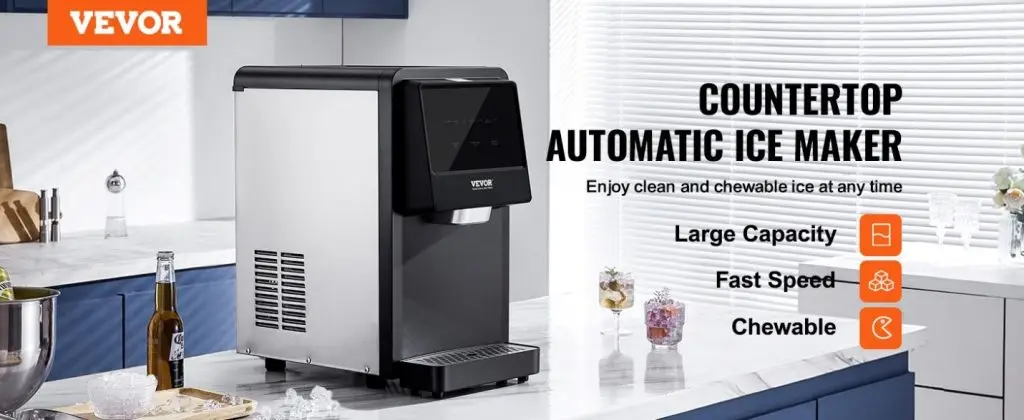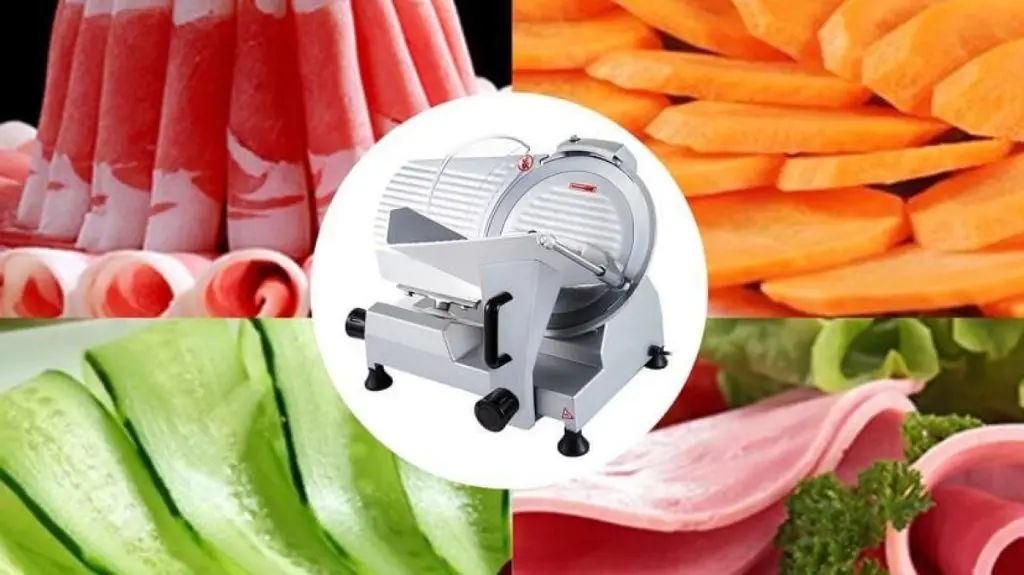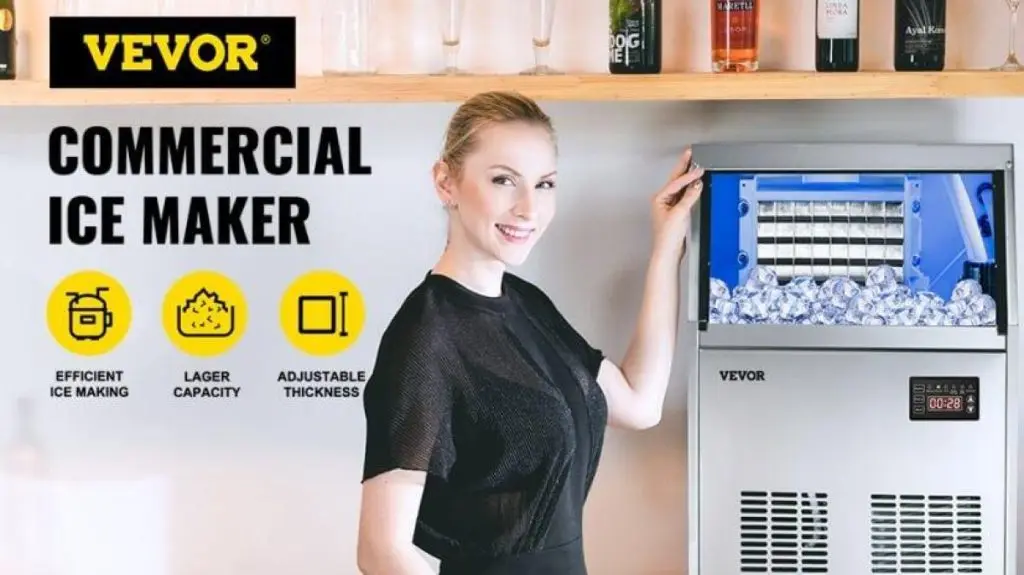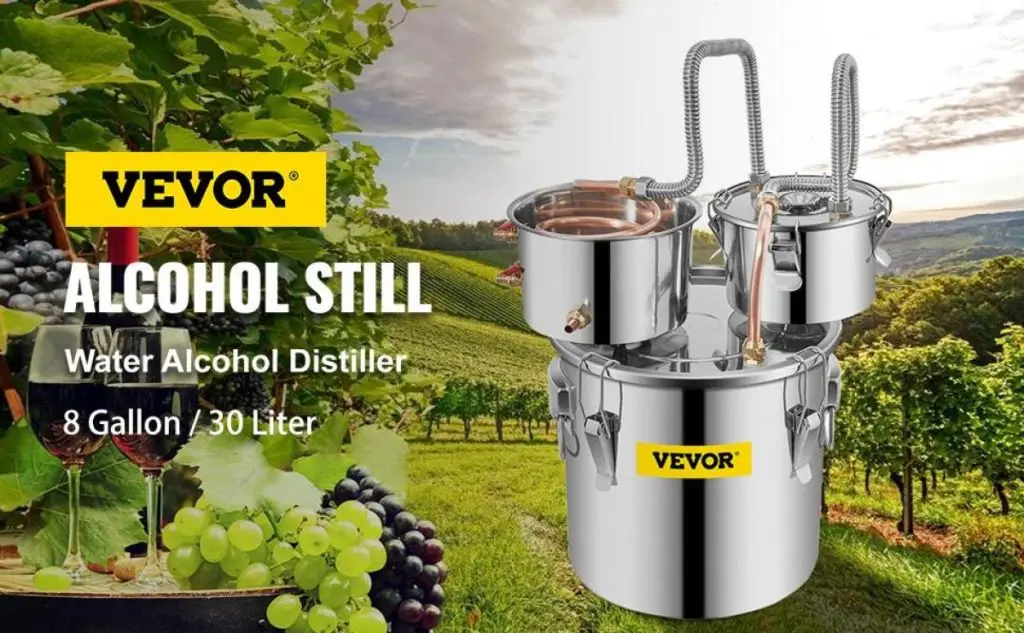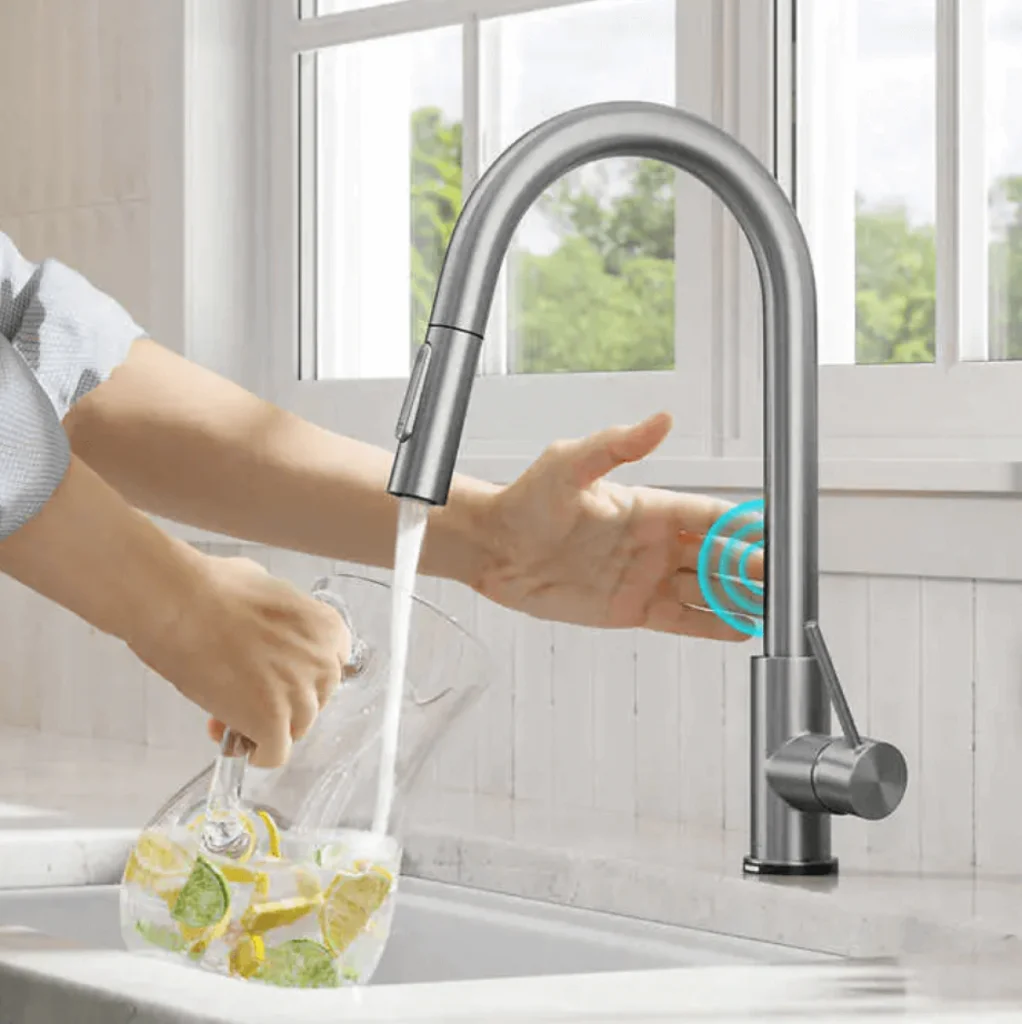Imagine a scorching hot summer day; your drinks are warm, and it is nearly impossible for you to gulp them down your throat. Enters the portable ice maker, providing you with a quick supply of ice cubes to chill your drinks and rejuvenate your day.
Portable ice makers are compact devices that offer a quick supply of ice wherever and whenever you need it. For instance, this VEVOR Self-Cleaning Portable Ice Maker can make ice cubes in just 8 minutes, 6 lbs of them in just 2 hours, and 62 lbs within 24 hours. In short, portable ice makers ensure that you have a constant supply of ice around the clock.
But how does a portable ice maker work? How do they make ice?
Well, continue reading to learn all about the ice-making process of portable ice makers. In this comprehensive guide, we are going to discuss it all—from the main components to the refrigeration cycle and factors to consider when buying a portable ice maker.
Table of contents
Main Components of Your Ice Maker
Ice maker consists of various components that work together to provide you with a constant supply of fresh ice.
Water reservoir
This is where water is stored and is eventually converted into ice cubes. Make sure that there is enough water in the reservoir for your portable ice maker to continue making ice without any interruption.
Compressor
This is the heart of your portable ice maker. Where your heart pumps blood, compressors pump refrigerant. Besides pumping, the compressor also pressurizes refrigerant gas, preparing it for rapid expansion later.
Condenser
The condenser receives the high-pressure vapor from the compressor. As the high-pressure vapors pass through the condenser, heat is dissipated into the surroundings, converting vapors into liquid. This high-pressure liquid is then drained through the throttle valve to become a low-pressure liquid.
Evaporator
The high-pressure liquid from the condenser flows to the evaporator coil, where it expands and experiences a further drop in its temperature. This creates a chilling environment that freezes the water into ice.
Ice-making tray
The ice-making tray is where the ice is produced. They are filled with water from the water reservoir and simply sit within the evaporator. So, as the high-pressure liquid expands in the evaporator coil and creates a chilling effect, the water in the ice-making tray freezes, producing ice cubes.
Thermostat
Where the compressor is the heart of a portable ice maker, the thermostat could be referred to as its brain. It constantly monitors the temperature inside the portable ice maker. When it senses that the temperature inside the ice-making chamber has reached a pre-set level, it signals the compressor to take a break. Conversely, when the temperature rises above that pre-set level, it signals the compressor to get back to work. It also controls the inlet valve to regulate the flow of water from the reservoir to the ice-making tray.
Inlet Valve
There is a water reservoir, and then there is an ice-making tray sitting in the evaporator. One may wonder how the tray gets filled with water. Well, the inlet valve controls the flow of water from the reservoir to the tray. It is an electronically controlled valve and is controlled by the thermostat, as discussed previously.
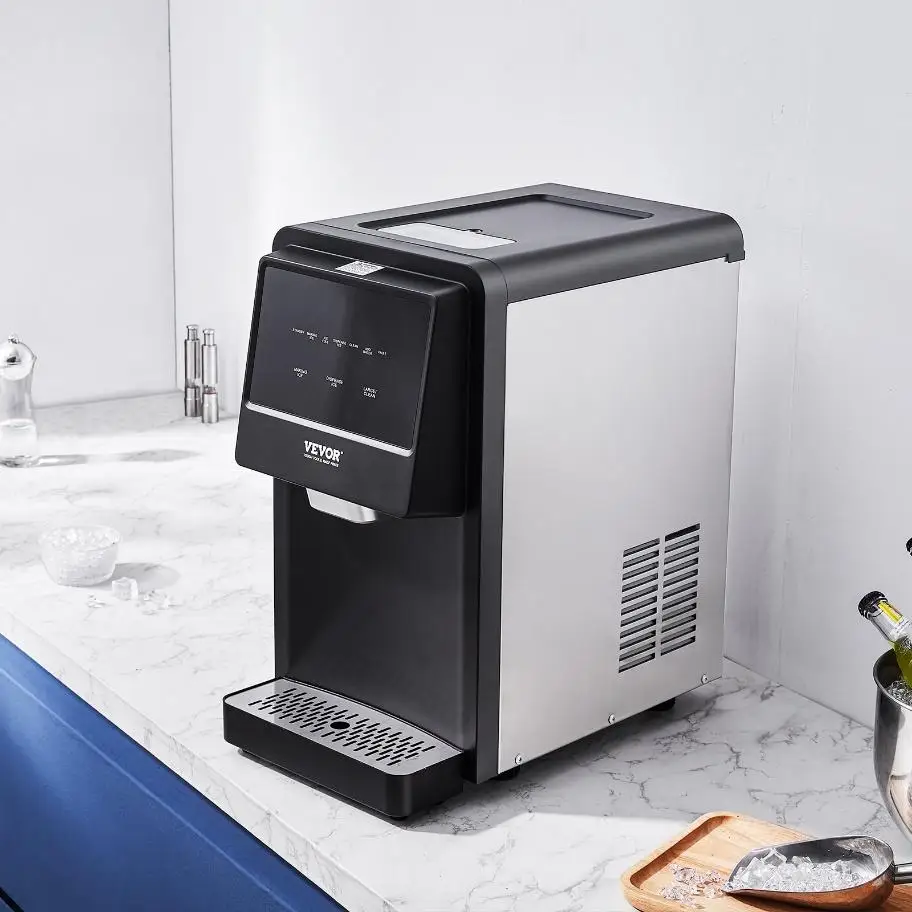
How Does a Portable Ice Make Work?
After the brief overview of the functions of various components of a portable ice maker, you might have an idea about how do portable ice makers work, but if you want to learn the step-by-step process, below we have discussed it in detail.
Step 1: Filling Up
Your portable ice maker does not make ice cubes out of air—it needs water. So, the process starts with you filling up its water reservoir with fresh water. Once there is enough water in the reservoir, the thermostat will signal the inlet valve to allow water to flow into the ice-making tray. Once the tray is full, the flow is stopped.
Step 2: Refrigeration Cycle
When signaled by the thermostat, the compressor starts pumping and pressurizing the refrigerant gas and increasing its temperature. This hot, high-pressure gas is pumped into the condenser coils, where excessive heat is dissipated into the surroundings. Heat dissipation transforms the hot-high-pressure gas into a cooler, high-pressure liquid, which flows through an expansion valve, expanding it (reducing pressure) and further reducing its temperature.
Step 3: Ice-Making Process
The super-chilled liquid refrigerant then enters the evaporator coils. The evaporator coils absorb all the heat from its surroundings, bringing the refrigerant liquid to boil and converting it into a gas again. This significantly lowers the temperature of the evaporator coils and the ice-making tray that they surround. This strong chilling effect drops the temperature of the ice-making tray below freezing point, freezing the water in the tray and making you ice cubes.
Step 4: Harvesting Ice Cubes
The thermostat is watching all the action, and as soon as it senses that the ice cubes have reached their predetermined size and hardness, it signals the compressor to stop an inlet valve from closing up and cut off the water flow. The ice tray ejects the ice cubes into the ice bin. The compressor remains off until the temperature rises in the ice maker again, and the thermostat signals it to get back to work for the next cycle.
Factors to Consider When Buying A Portable Ice Maker
Now that you know how a portable ice maker works, you might be thinking of getting yourself a portable ice maker for a constant supply of ice cubes for your beverages. Well, here are a few factors for you to consider before making the purchase to ensure that you get the right one.
- Size and Capacity: Different ice makers have different dimensions and ice storage capacities. So, make sure that you get a portable ice maker that can easily fit on your countertop or wherever you plan on putting it. Also, check if it has ample ice storage capacity.
- Ice Making speed and capacity: You may also want to check if the ice maker can make you quick ice cubes and how much its daily capacity is. Choose an ice maker that has a faster production rate and ice production capacity to meet your daily needs.
- Type of ice: Some ice makers offer different shapes of ice, such as crescent ice, flake ice, cube ice, etc. Make sure that you pick the one that suits your needs. Similarly, you may also want to double-check the size of the ice cubes that the ice maker can produce. Look for ice makers that allow you to adjust the size of ice cubes.
- Energy efficiency: Good ice makers do not use much energy, but if you buy a cheap one, it might end up costing you a lot more in the long run in the form of energy bills. So, make sure you pick an energy-efficient model, even if you have to push your budget a little.
- Maintenance: Pick a portable ice maker that is easy to maintain. Look for models with the auto self-cleaning option.
Why Choose VEVOR Portable Ice Maker?
Looking for a reliable yet affordable portable ice maker that will provide a constant supply of fresh ice? Well, check out this VEVOR Portable Ice Maker. It can make ice cubes quickly—within 8 minutes. It has a total ice-making capacity of 62 lbs within 24 hours and a storage capacity of 6 lbs. The ice storage section features long-lasting insulation, allowing you to store the ice for over 8 hours in case of power failure.
This ice machine features an intelligent anti-freeze cylinder mode, which automatically starts when the ambient temperature gets too low to ensure that normal ice extraction is not affected. And did I mention that it has a self-cleaning feature? Yes, with its self-cleaning function, you just have to push a button, and the ice maker will clean itself, reducing the manual cleaning required to keep the ice maker working optimally.
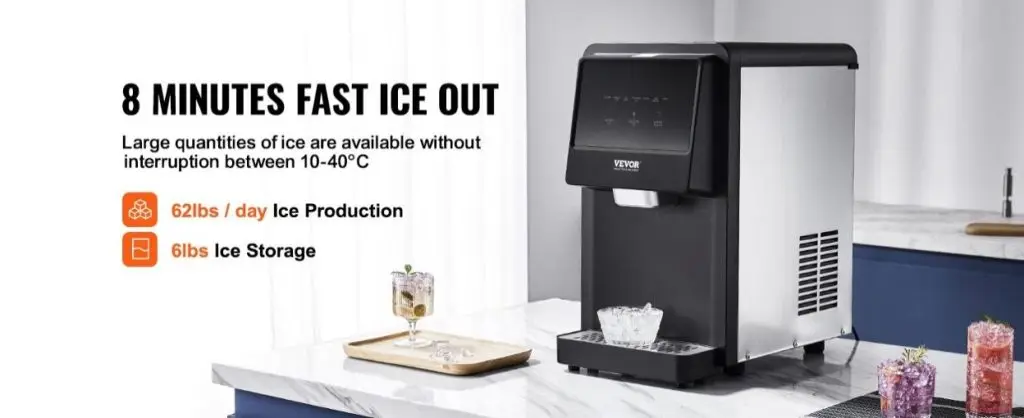
FAQs About Portable Ice Makers
Why is my portable ice maker not making ice?
Behind a portable ice maker not making ice, there could be many reasons, including a faulty component (compressor, condenser, thermostat, motor), high ambient temperature, low water pressure, refrigerant leak, etc.
Do portable ice makers need a water line?
No, they do not really need a dedicated or continuous attachment to a water line. You just have to fill in their water reservoir.
Do portable ice makers need to be plugged in?
Yes, to function and convert water into ice, portable ice makers need to be plugged into a power outlet.
Do portable ice makers need a drain set up?
Some portable ice makers do not need a drain setup—they reuse the melted water, or you have to drain them manually. However, some portable ice makers might need a basic drain setup.
Conclusion
So, there you have it. A comprehensive guide on how does a portable ice maker work.
We have discussed how different components of an ice maker work together to provide you with a constant supply of ice cubes. If you are planning on buying a portable ice maker, consider the factors discussed above to ensure you pick the right one.For reliable options, consider checking out the VEVOR ice machines collections, if you have large ice needs and the VEVOR countertop ice makers collection for your daily usage.

